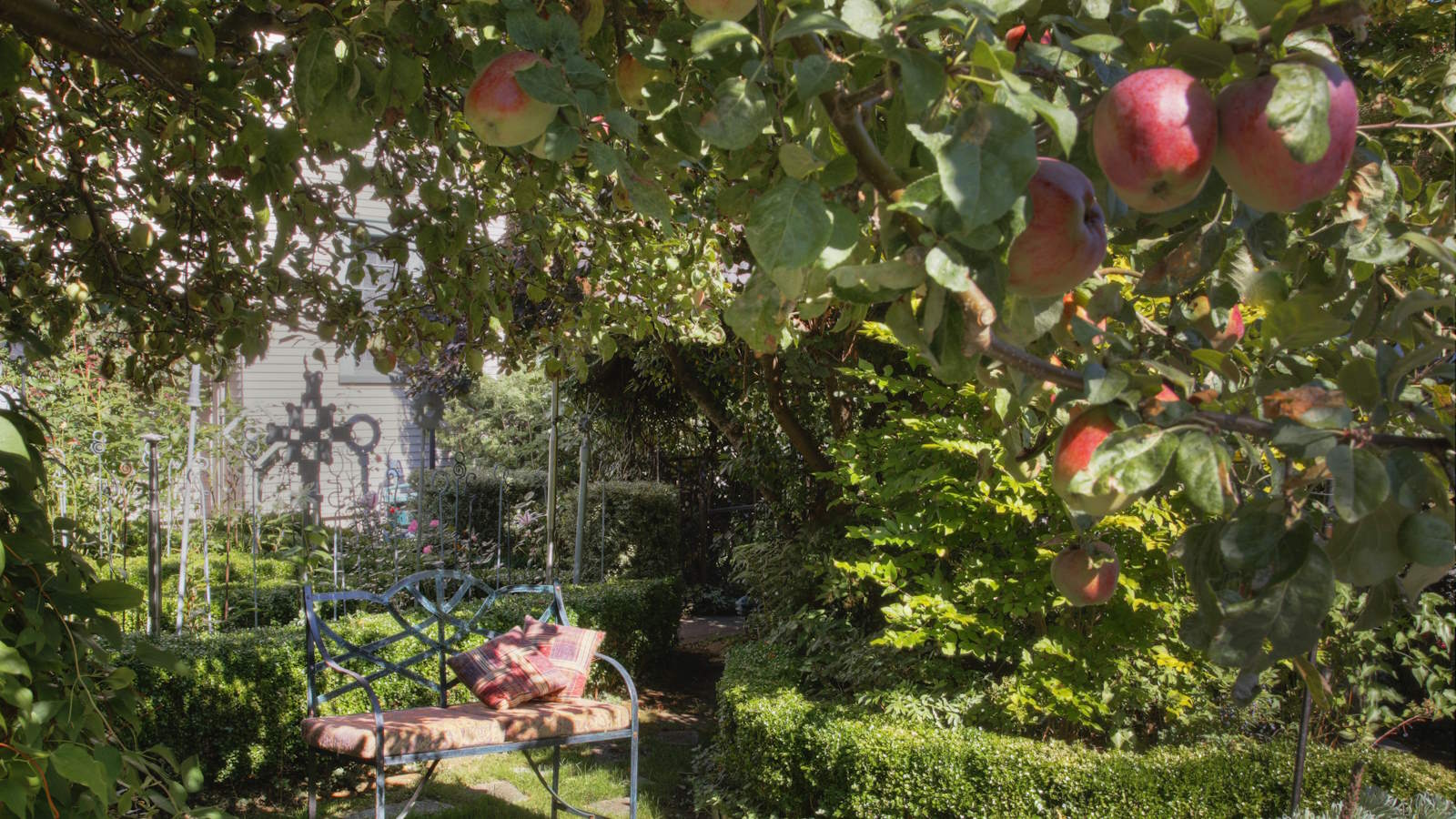
There are a great variety of fruit trees to grow at home and all will benefit hugely from being fertilized annually. Taking time to feed and nurture your fruit trees will keep them in fine fettle and provide you with the best harvest of delicious homegrown fruits.
Along with knowing when to fertilize fruit trees, understanding how to feed the trees and what to feed them with are all important factors to having happy and productive fruit trees in your backyard.
To help you determine the best way to fertilize your fruit trees, we hear from some experts about fertilizing both established and young fruit trees, along with how to choose the best feeds to give to your trees, whether they are growing in the ground or in containers.
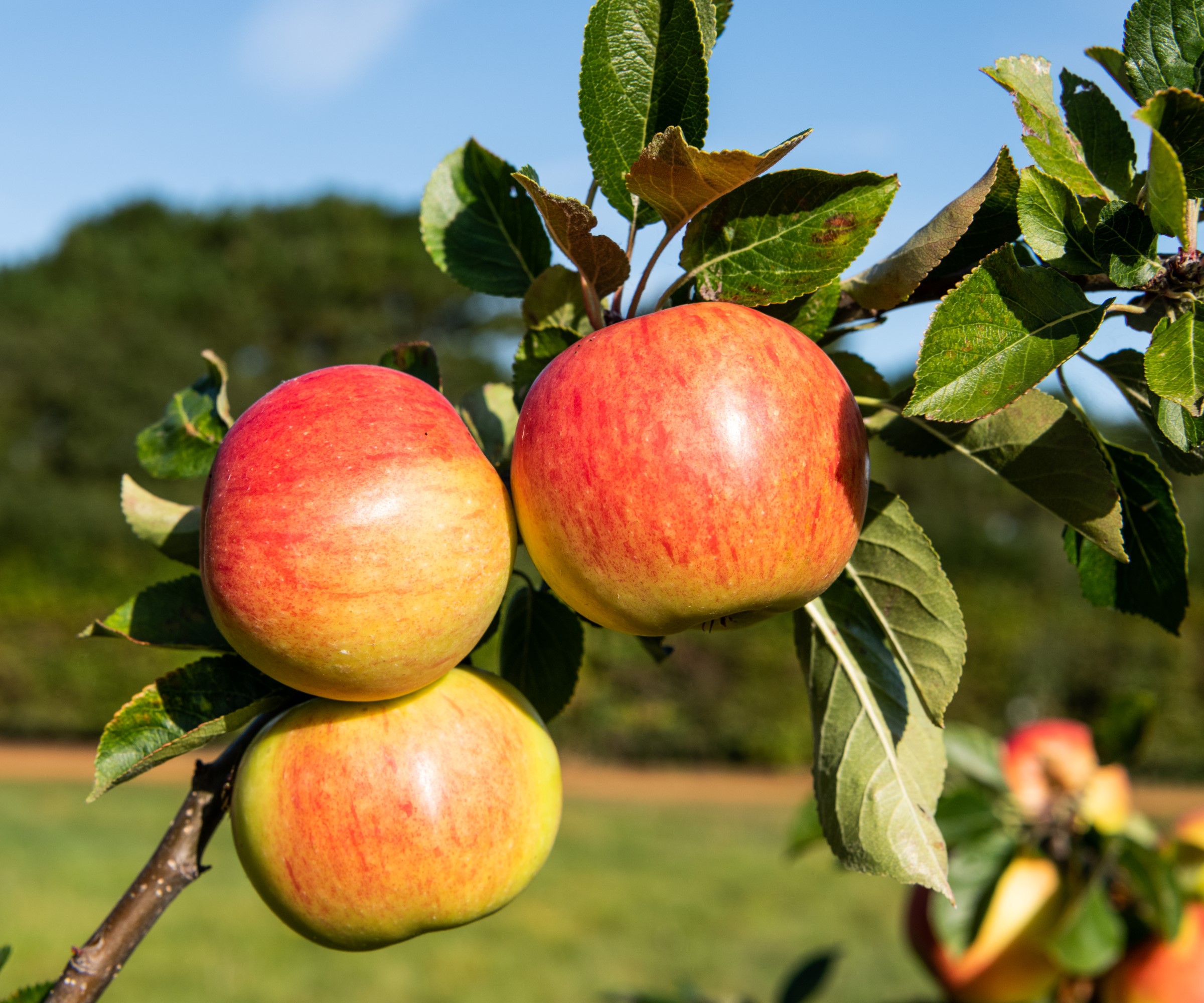
Why you need to fertilize fruit trees
All fruit trees need specific nutrients for strong and healthy growth and the soil can get depleted over time. Feeding the soil replenishes those nutrients, making them consistently available to the tree.
Fertilizing is important throughout a tree’s life, from planting a fruit tree to help it establish, through to aiding the production of fruit on older established fruit trees. Regular feeding will encourage flowering and fruiting and help the tree stay healthy, as a well-nourished tree is more resistant to pest and disease issues.
How to fertilize a fruit tree
The best method of fertilizing a fruit tree will vary depending on the age of the tree and where it is growing.
How to fertilize an established fruit tree
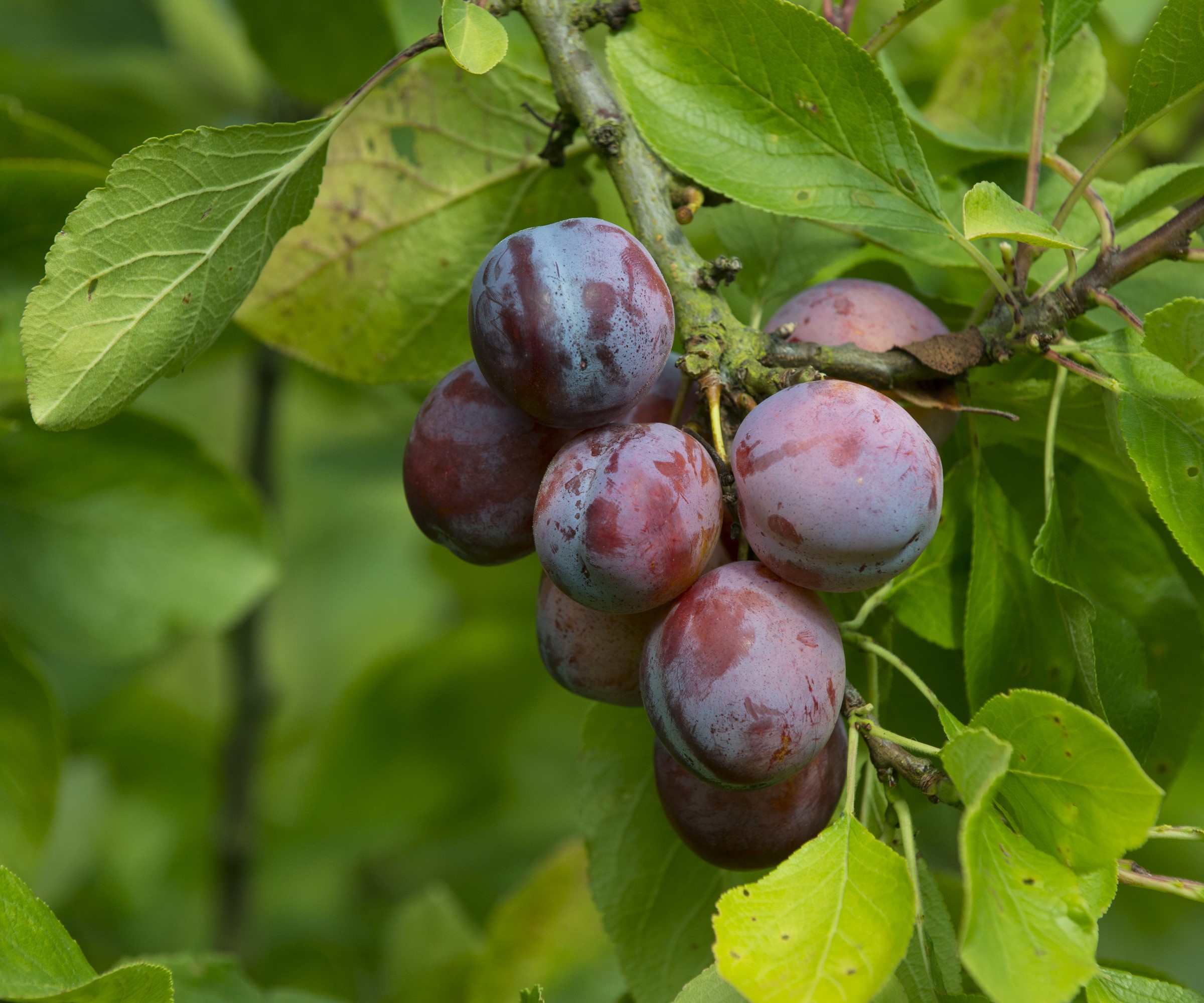
An older and established fruit tree is ideally fed in late winter or early spring. Just when they are starting to grow for the new season is the best time as they require lots of nutrients.
All fast-growing fruit trees need a wide range of nutrients to grow strongly. Gary Morrison, horticultural consultant at Stark Bros, advises how they need ‘both macronutrients and micronutrients’ for healthy growth. He adds: ‘Macronutrients include nitrogen, phosphorus, potassium and calcium. Micro's include boron, iron and zinc.
The fruit tree expert recommends that the NPK ratio of any fertilizer used on established fruit trees must be ‘well balanced’. It is important to understand plant fertilizer numbers in the form of the NPK ratios you see on product packaging. This shows the makeup of nitrogen, phosphorus, and potassium as three numbers, for example, 10-10-10 or 20-20-20.
A balanced general-purpose organic fertilizer is often a good place to start for any established fruit tree. Such a product will give equal ratios of the main NPK nutrients, along with lots of other macro and micronutrients required for healthy growth.
Fern Berg, founder of Tree Vitalize, also has an extra tip for fertilizing certain types of fruit trees, adding: ‘You can also adjust any nitrogen application based on the annual growth rate of the tree. For example, a recommended application rate for apples and pears is 1/10th pound of nitrogen per inch of trunk diameter.’
Always apply fertilizer at the recommended rates from the manufacturer, as over-feeding can cause a myriad of potential issues for any fruit trees.
How to fertilize young fruit trees
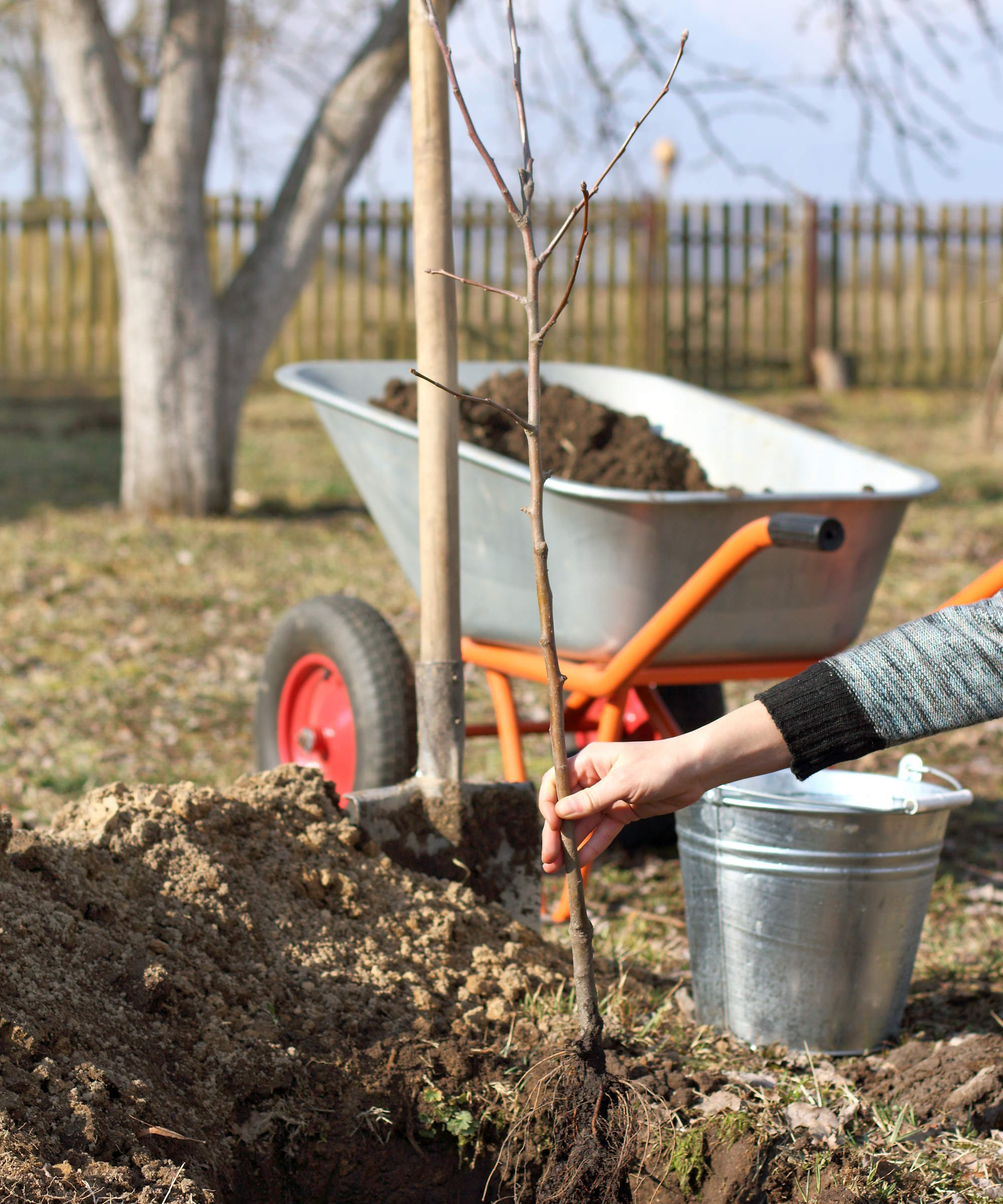
Spring is also the perfect time to feed young fruit trees, which are any that are under three years old. Giving a newly planted fruit tree the right feed will get it off to a great start and help establish it in its new spot. However, you will reap the rewards of slightly altering the type of feed you use for younger fruit trees.
‘Young, non-bearing trees may benefit from a formula with slightly higher nitrogen content in a ratio such as 12-6-6 as this will boost vegetative growth of leaves, branches and roots,’ recommends Fern Berg.
Young fruit trees will also benefit from an annual mulching. This can help retain water in the soil, smother any competition from weeds, and provide a small amount of extra nutrients as they break down. The likes of compost, well-rotted manure, or leaf mold are all great options for mulching around fruit trees.
An all-purpose plant food with an NPK ratio of 12-6-6 that can be beneficial for feeding young fruit trees
How to fertilize fruit trees in pots
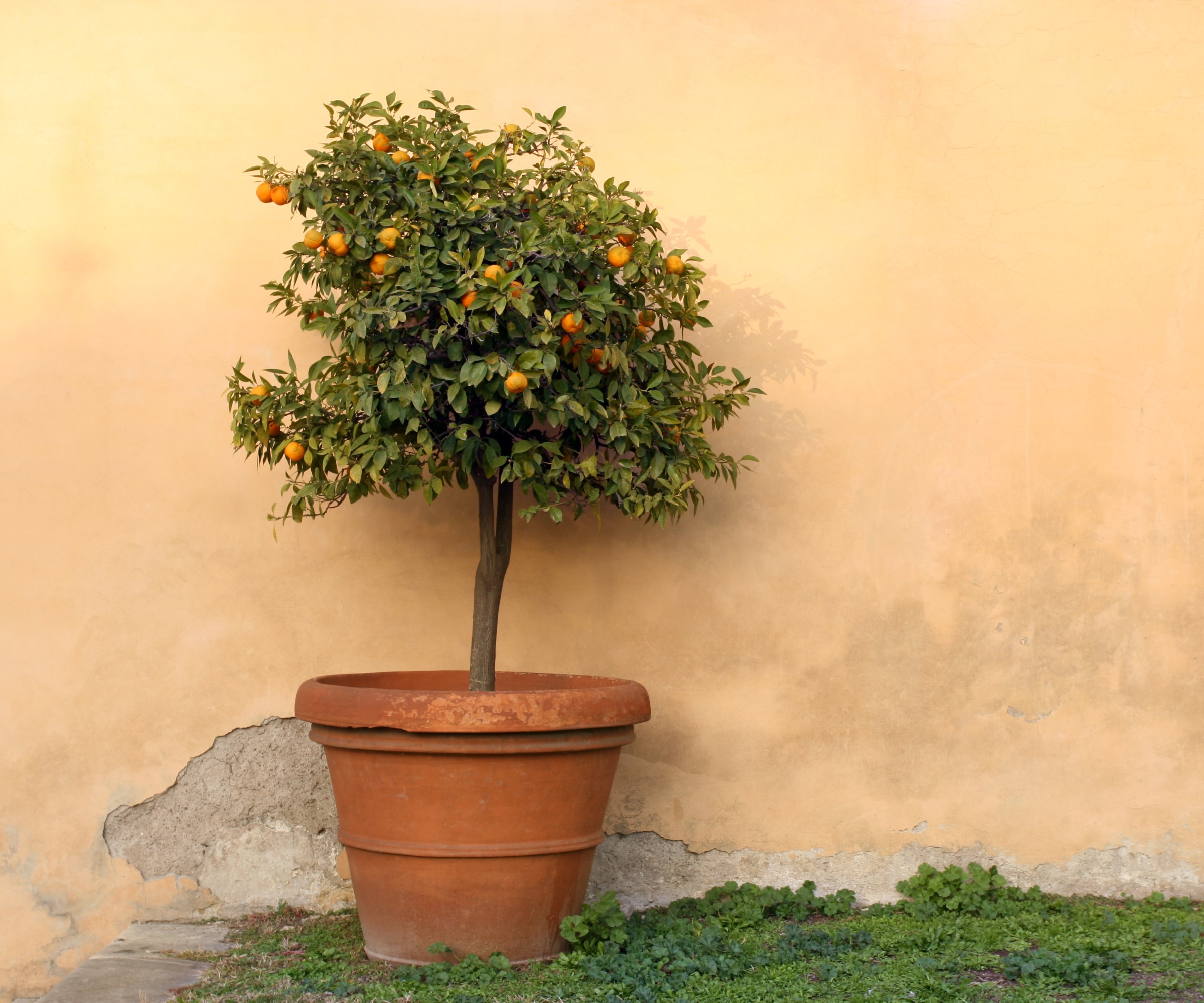
Fruit trees growing in pots can quickly use up all the nutrients available in the soil. If you are growing fruit trees indoors or as part of a container garden, it does mean that fertilizing needs to be done more regularly than with trees growing outdoors.
However, there is an increased risk of over-fertilizing with fruit trees in pots. Making good choices in terms of the type of feed can mitigate this potential risk.
‘Applying a balanced, slow-release organic fertilizer (eg. 10-10-10 ratio of NPK) will help minimize the risk of overfertilization,’ advises Fern Berg. ‘It will be best to provide conservative amounts and boost your tree with low dose, liquid feeds if needed.’
A dose of a balanced slow-release fertilizer, which will likely be a granular feed, should be applied in spring. Once the tree is fruiting, it will also benefit from a fortnightly feed with a liquid feed higher in potassium. Good examples of such a feed include one designed for growing tomatoes or a comfrey fertilizer.
A multi-purpose feed with an NPK ratio of 10-10-10 that can be used to fertilize fruit trees growing in pots
What is the best fertilizer for fruit trees?
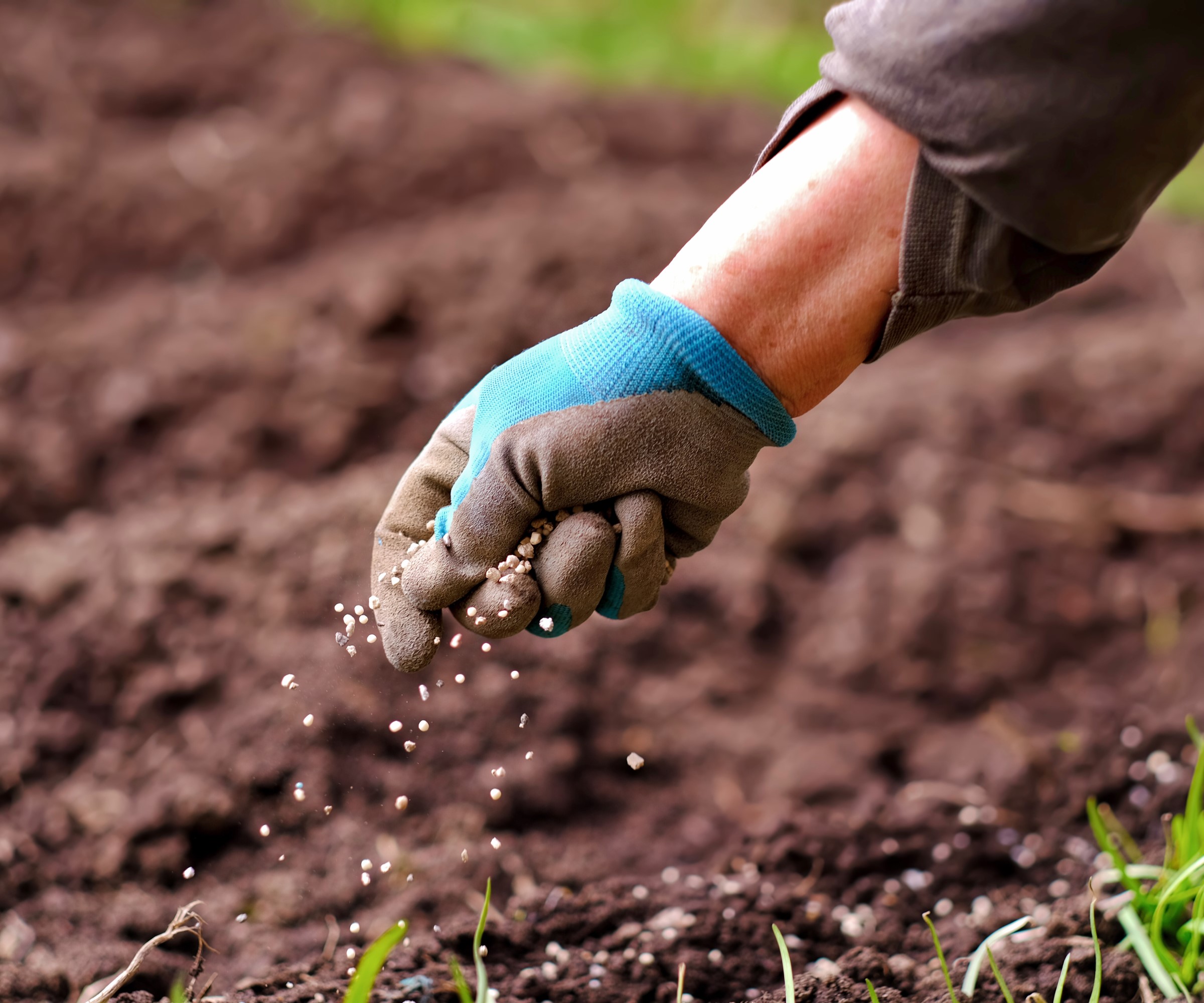
To keep growing healthy and produce an abundance of fruit every year, fruit trees will need a good supply of nutrients. In late winter or early spring, it is best to use a fertilizer that is specifically formulated for fruit trees, such as the Dr. Earth Natural & Organic Natural Wonder Fruit Tree available at Walmart. Some fruit trees have feeds that are specifically formulated for them, such as citrus trees, which should always be used as they contain the macro and micronutrients essential for those specific trees.
All fruit trees need potassium for the development of buds and fruits, but the likes of pears and stone fruits also benefit from additional nitrogen. A balanced fertilizer should provide all the NPK it requires. However, an established fruit tree that has not been fruiting as well as in previous years may benefit from a feed higher in potassium, such as potash available at Amazon.
Most fertilizer for fruit trees will come in slow-release granular form and should be sprinkled around the base of the tree. Spread the feed all over the rooting area, which will spread as wide as the branch network above the ground. If the tree is growing in grass, remember to remove a ring of the grass from around the tree before feeding.
Liquid fertilizers can also be used, such as when growing fruit trees in pots, and they make nutrients more immediately available to the plant. Combining the two can be a useful way to fertilize a fruit tree, for example, using a granular fertilizer in spring and then supplementing it with a liquid fertilizer if your fruit tree needs a quick boost if it is showing signs of deficiencies or vigor.
What are the best mulches for fruit trees?
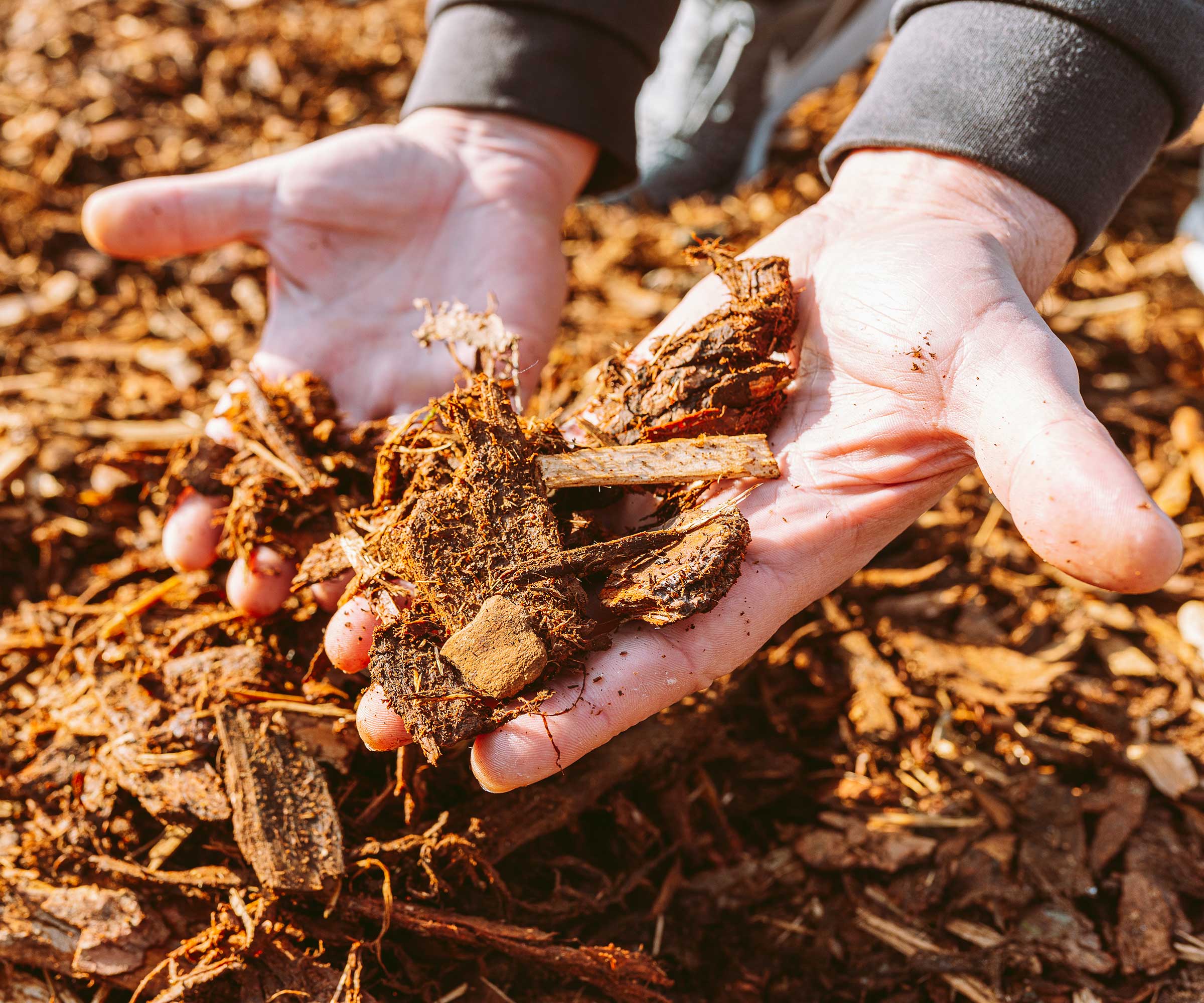
Mulching can help fruit trees in many ways. It can help to conserve moisture in the soil, reduce the weed competition around the tree, and also provide some nutrients to further boost fertility.
Typical types of mulches include the likes of compost, leaf mold, or well-rotted manure, however, Meredith Gaines, plant expert for Fast Growing Trees, offers a few alternatives that are fantastic options for fruit trees.
She says: ‘Any wood chip mulch or even pine straw works well with fruit trees. Avoid heavier mulch, like rocks, that can compress the roots and hold excess heat. When mulching, add a layer around 3 inches deep and make sure it is pushed back from the trunk a few inches – it's the roots that need the mulch, not the trunk.’
Nancy Trautz-Awot, horticulture specialist at Burpee Gardening, also adds: ‘If you can find cedar mulch, it is very good. It takes a long time to break down and the cedar can help deter bugs from your fruit trees, like termites.
‘Hardwood is another good option; similar to cedar mulch, hardwood takes a long time to break down.’
FAQs
Is tomato feed good for fruit trees?
Tomato fertilizer is high in potassium and can help fruit trees produce and ripen fruits throughout the growing season. It is especially useful when growing fruit trees in pots and regular feeding with tomato fertilizer should begin once the fruit tree starts flowering. Only use tomato feed as an additional fertilizer on top of a slow-release balanced feed in spring, as it will not provide all the nutrients the trees require alone.
Can you use bone meal on fruit trees?
Bone meal is a fertilizer that is high in phosphorus and it is also a good source of nitrogen. It releases nutrients to plants over a long period and can be beneficial when planting fruit trees as it promotes the strong development of roots. You can get bone meal from Burpee.
Knowing when to plant fruit trees, and what feed to add when planting, ensures you get any tree off to the best start. Bare-root trees are planted during their dormancy, from November to February, while container-grown fruit trees can be planted throughout the year. Planting them in spring or fall does have more benefits, though, as you would need to water the trees very frequently if you plant in the heat of summer.







